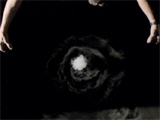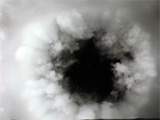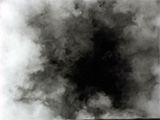|
|
 |
TREKCORE >
VOY >
EPISODES > FLASHBACK
> BEHIND THE SCENES
> 3
 |
David Livingston:
"We had to recreate the same set. We brought back the actors that we could from
Star Trek VI: The Undiscovered Country and actually show the scenes that were continuations of the feature film. So that was a real challenge and really fun to do. It was kind of surrealistic in a way because the actors were sort of picking up where they left off several years ago in a feature film and now they're doing a TV show. So that was fun, and great to work with George Takei and Grace Whitney and Boris Krutonog and whoever else we got from the original cast." |
|
|
|
|
|
|
|
|
 |
George Takei:
"The recreation of the explosion scene, the Praxis, the scene from
Star Trek VI: The Undiscovered Country, movement for movement, throw for throw and all of the principal actors in that scene, some had left the industry - one came back from Portland, Oregon, or some place like that, he told me, that he was no longer pursuing a career, but Paramount came after him so their integrity and the tremendous research they did in finding all the actors was very impressive. I think even a couple of the extras were the original ones." |
|
|
|
|
|
|

|
Mike Okuda, scenic arts supervisor: "We had to recreate the Excelsior bridge, the one we had created for
Star Trek VI: The Undiscovered Country, and even though we had a lot of the material from that bridge we did the graphics for the Excelsior bridge over several weeks during
Star Trek VI: The Undiscovered Country, and had to recreate everything in a far far shorter period. Our video operator Ben Betts put in an amazing number of hours along with Denise [Okuda] to recreate as much as possible the older video monitors we had on the set, Wendy Drapanis and Jim Magdaleno again recreated all the backlits, because even though the set existed there was a great deal of work to be done."
|
|
|
|
|
|
|
|
|
|
|
|
|

|
Tim Russ:
"They decided to recreate the whole thing from scratch with him there and recreated the whole moment but put me in the ship at that time, which is a coup d'etat storywise because nobody would see it coming, nobody could question it, the timeline was consistent so nobody could say "hey, he couldn't possibly, blah-blah, or no we didn't see that blah-de-blah" - they couldn't say it. It worked perfectly. So I thought that was the coolest thing. Make sure the fans don't catch anything. That's always a neat trick."
|
|
|
|
|
|
|
|
|
|
|
|
|

|
David Livingston:
"We did 360s stuff as well (move the camera all the way around a character - this occurs at least twice, once in the turbolift, and shortly afterwards upon Tuvok's collapse in engineering). If you want to, you can sort of do that on Star Trek. Sometimes they look at you askance, but if you can't do it on a science fiction show with people wearing screwy make-up where else are you going to do it? So to me it's play and it might as well go forth, because if you don't you're going to regret it later. Try not to be boring, that's the main thing, try not to be boring, so making 360s around a character that's going nuts makes sense to me. That's not boring, I hope." |
|
|
|
|
|
|
|
|
|
|
|
|

|
Tim Russ:
"The whole story becoming a backstory for Tuvok. It's great. It tightens the relationship between me and the captain, and it exposes to people in the audience what this character is all about, where he comes from. Because before that we didn't have a history for him, and after that we had a history for him. Now he's got a backstory, now he becomes a little bit more complete as a person. Now, if he does something three episodes down the line, ah well, that's because so-and-so was established way-back-when. And that's always beneficial when you're playing a character as you have something to grab onto. So I can use this, because we learned this, we know where he came from, we understand what happened, and now we can use that as a motivational factor down the line, so it's always good to have that." |
|
|
|
|
|
|
|
|
|
|
|
|

|
George Takei: "I was impressed by how Tim has totally, completely and organically absorbed in his Vulcan heritage, the culture, the persona, the physiognomy and the psyche of a Vulcan. He seems to be more knowledgeable about Vulcan history than any person I know, and he brings that quality to his portrayal of Tuvok. So I was very impressed by him as an actor who makes a full and total commitment."
|
|
|
|
|
|
|
|
|
|
|
|
|

|
Dan Curry, visual effects producer:
"There's a scene in
"Flashback" where the Klingon ship is chasing the Excelsior in a very bizarre part of space that has all these different cloud formations and gaseous anomalies. And when you see the shot it may last just a few seconds on screen, but it might represent several hundred man-hours to bring that shot into existence. And in the case of this particular shot, there are explosions that were photographed with the camera pointing straight up, and shot at very high speed with a photosonics camera. Normally we film a shot at 24 frames a second, so if you have a small explosion it happens in real time it may occur like pfft! and it's over. But if you take a special camera that runs film at very high speed - in the case of these explosions it was 360 frames per second it stretches time, so an explosion that in real life may take a split second can be stretched out into several seconds and looks vast. And shooting it straight up, it gives the illusion that it's happening in space without gravity, because all of the parts of the explosion fall equally around the lens, so there's no apparent arc from gravity, so that we will accept that it happens in space." |
|
|
|
|
|
|
|
|
|
|
|
|

|
Dan Curry:
"Other elements in the shot are motion control miniatures, which may take, if we're quick, one day to shoot, to program and shoot the model spaceship which sits in one position and does roll, pitch and yaw while the camera moves on the track so the illusion of motion comes from a moving camera rather than the ship, and the camera and the ship change their juxtaposition to one another, so the viewer can't tell which is moving and which isn't. It just makes it easier to light the ship if it's in one place." |
|
|
|
|
|
|
|
|
|
|
|
|
 |
Dan Curry:
"Then there's an element where we see clouds separate and puff apart. And what that was was a four inch deep, four by four foot vat, lined with black velvet and filled up with
vapors of liquid nitrogen, which stay in the vat because they're heavier than air because they're so cold. Then Ron Moore took a piece of cardboard, or sometimes he used a dust-off can, and just put a little puff of air down, which would push the liquid nitrogen apart, and then it would billow back in. And because it's so cold and the way the
vapors move they move very slowly so it looks huge, even though it's a very tiny thing." |
|
|
|
|
|
 |
 |
 |
|
|
|
 |
George Takei:
"I just found it regrettable that we had changed so much that the original scene could not be
utilized. It was a very impressive job of recreating those scenes of, I think it was, five years before. We did that five years after we filmed
Star Trek VI: The Undiscovered Country." |
|
|
|
|
|
From
Janet's Star Trek Voyager Website |


|
|



